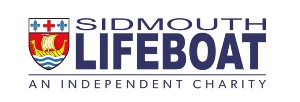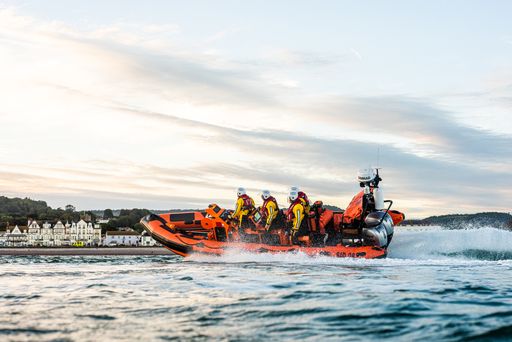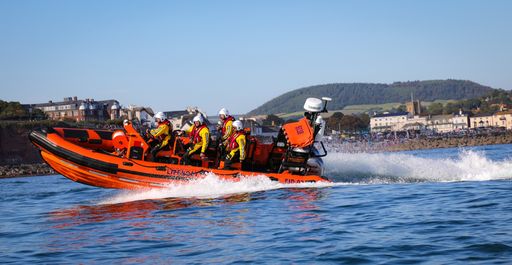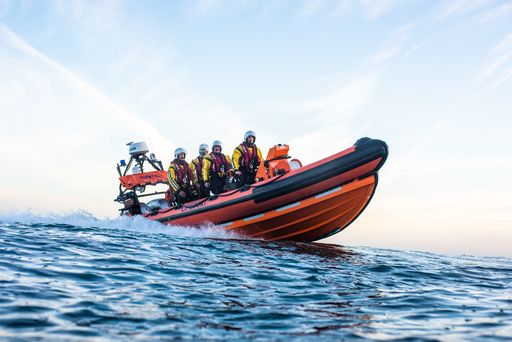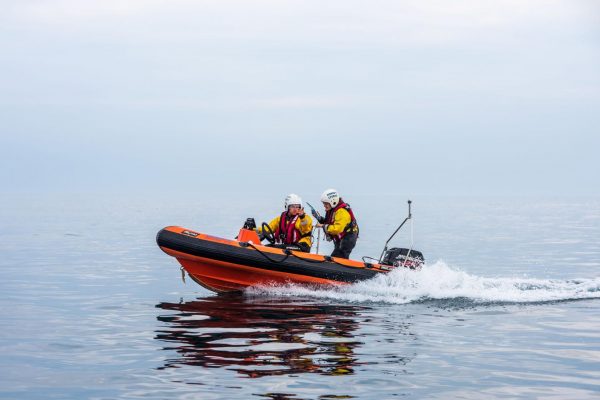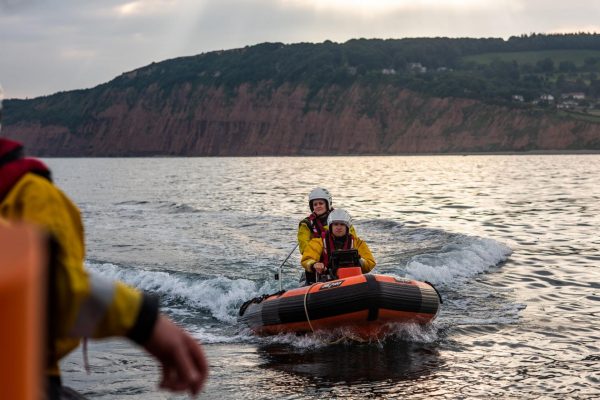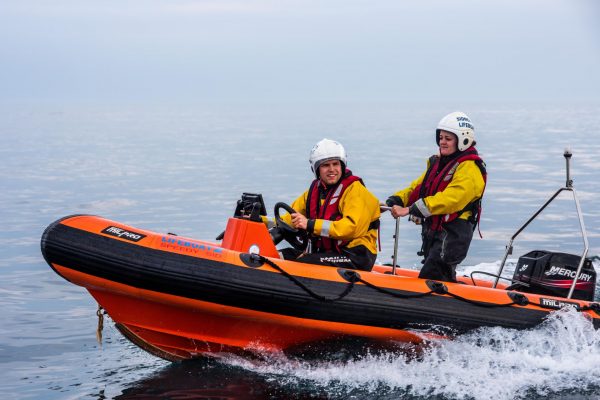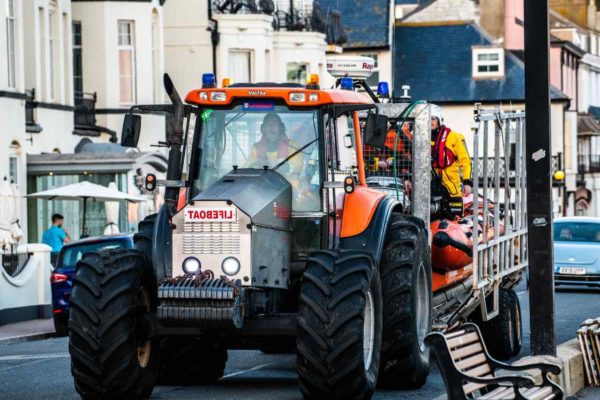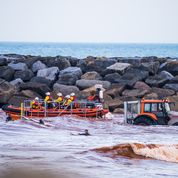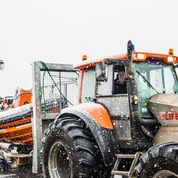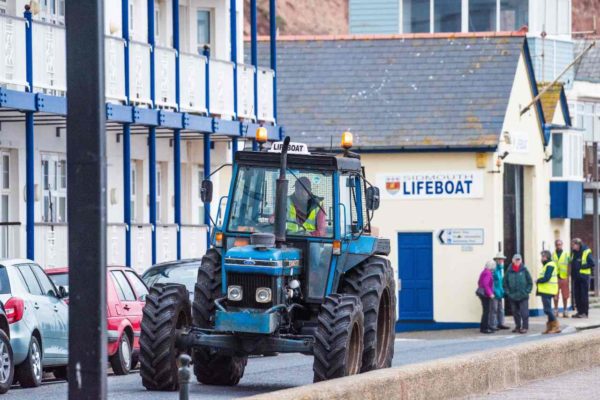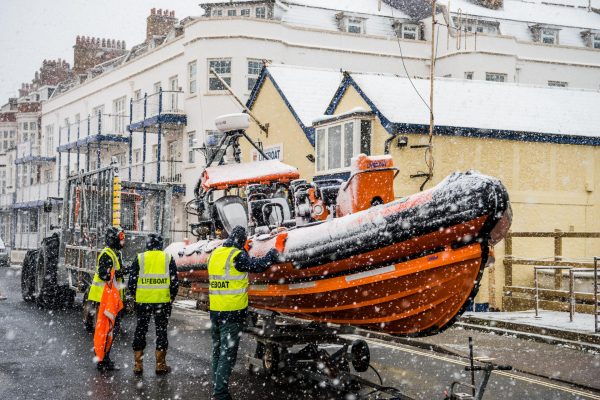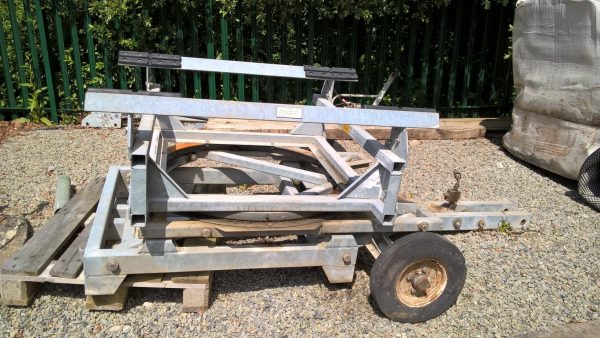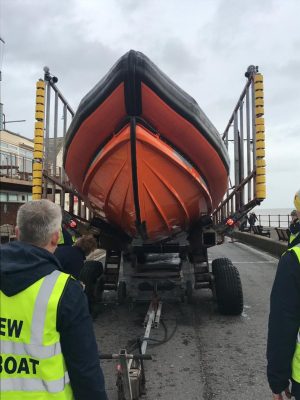Meet The Fleet
The generosity of the public who support Sidmouth Lifeboat means we are able to be well-equipped when it comes to our fleet of boats, watercraft and launch vehicles.
Thanks to a generous legacy from the late Surgeon Captain Peter Jeffrey Truesdale and his sister Barbara Gates, we were able to replace our previous Arctic 24, ‘Pride of Sidmouth’, in 2019 with our new boat, named after its benefactors. Pride of Sidmouth had been on-service from 2004 until 2019 and attended 274 call outs, assisting 226 people in its time. You can read more about our current fleet here.
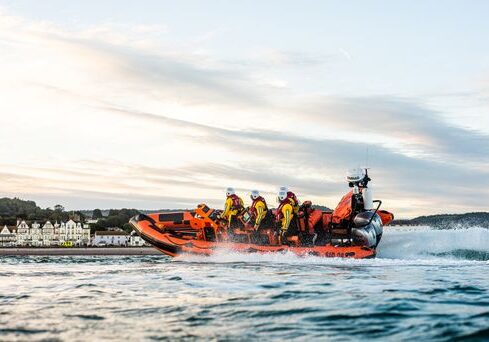
Peter & Barbara Truesdale
The Arctic 24 - self-righting Rigid Inflatable Inshore lifeboat.
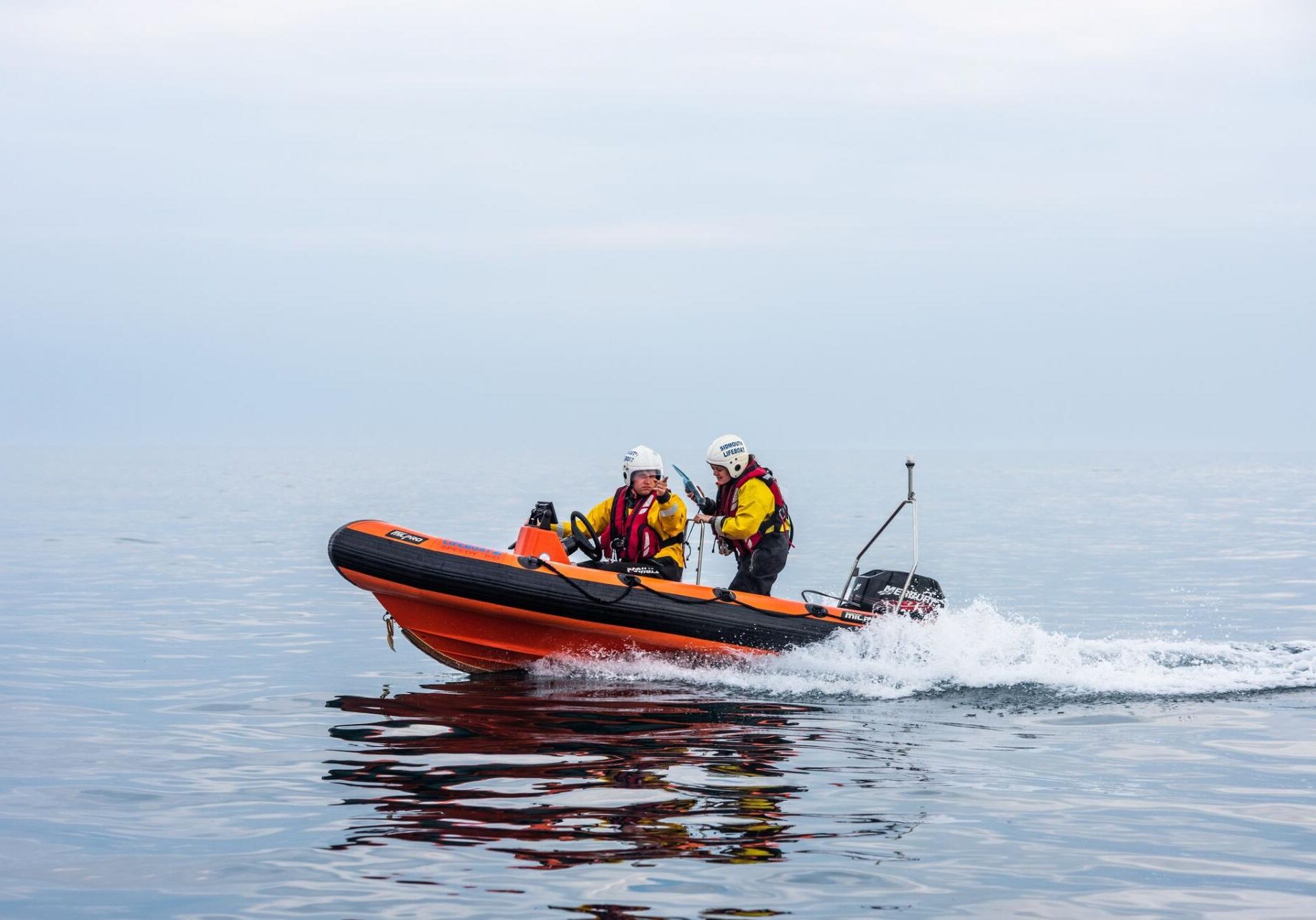
Sea Rider
Sea Rider
Affectionately known as "Speedy Sid", the Sea Rider can be dispatched without the need of a tractor.
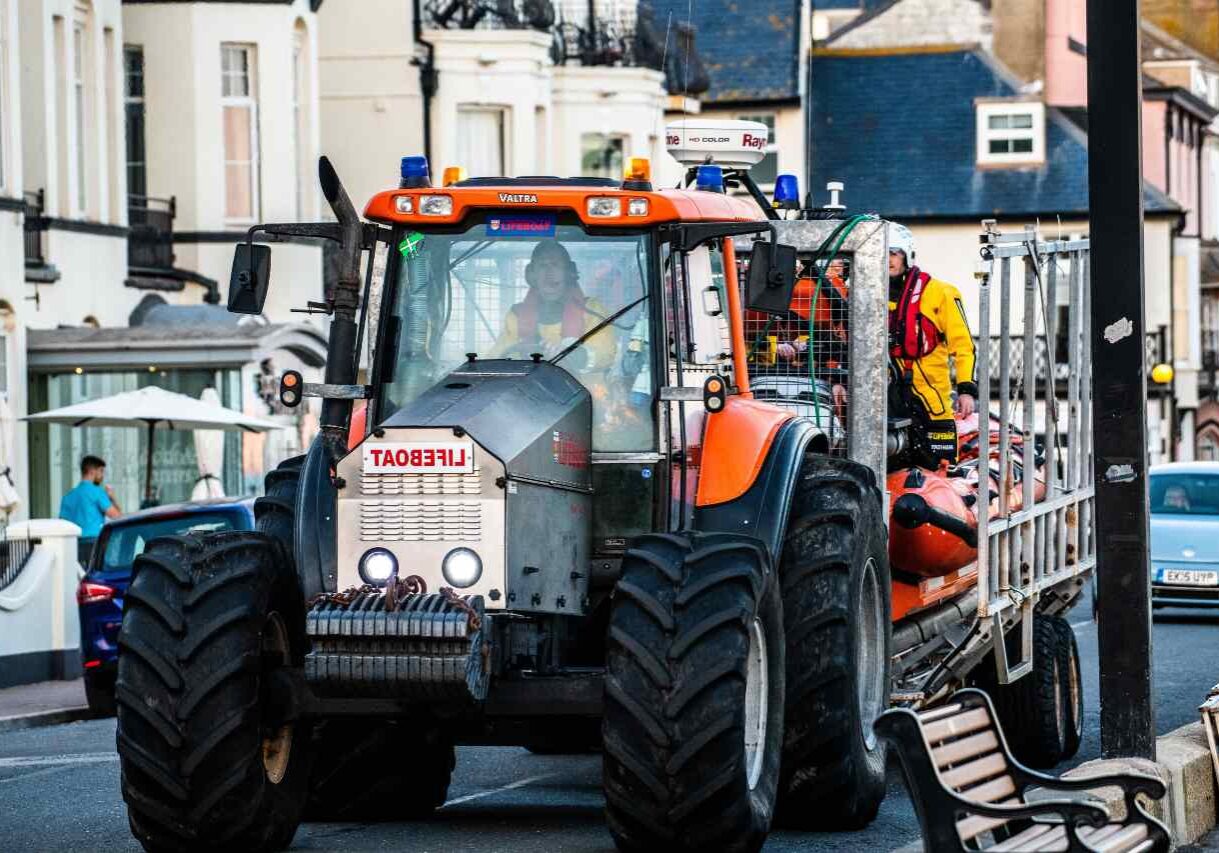
Launch Vehicle "Mary"
The Mary Taylor Valtra T140 tractor has been with the Lifeboat Station since 2015.
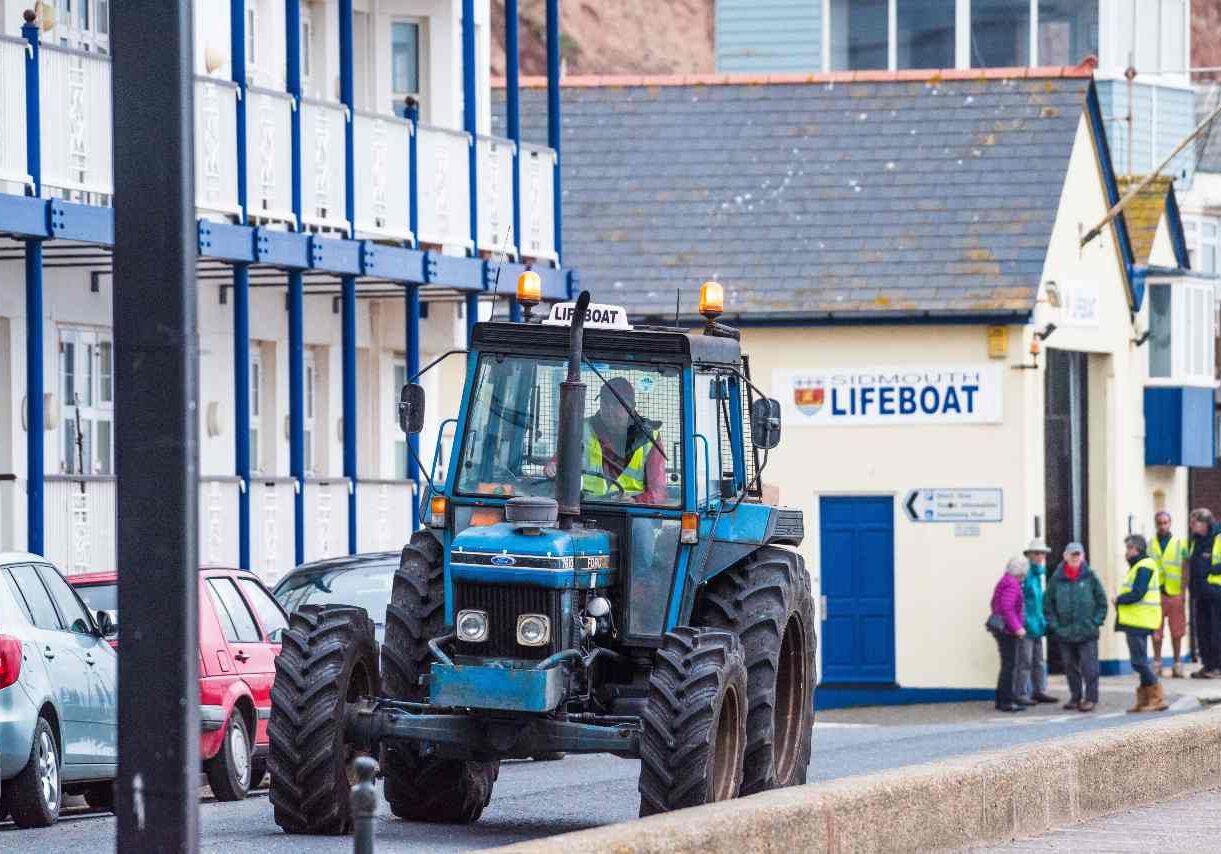
Winch Tractor
For recovery of all craft up the main beach.
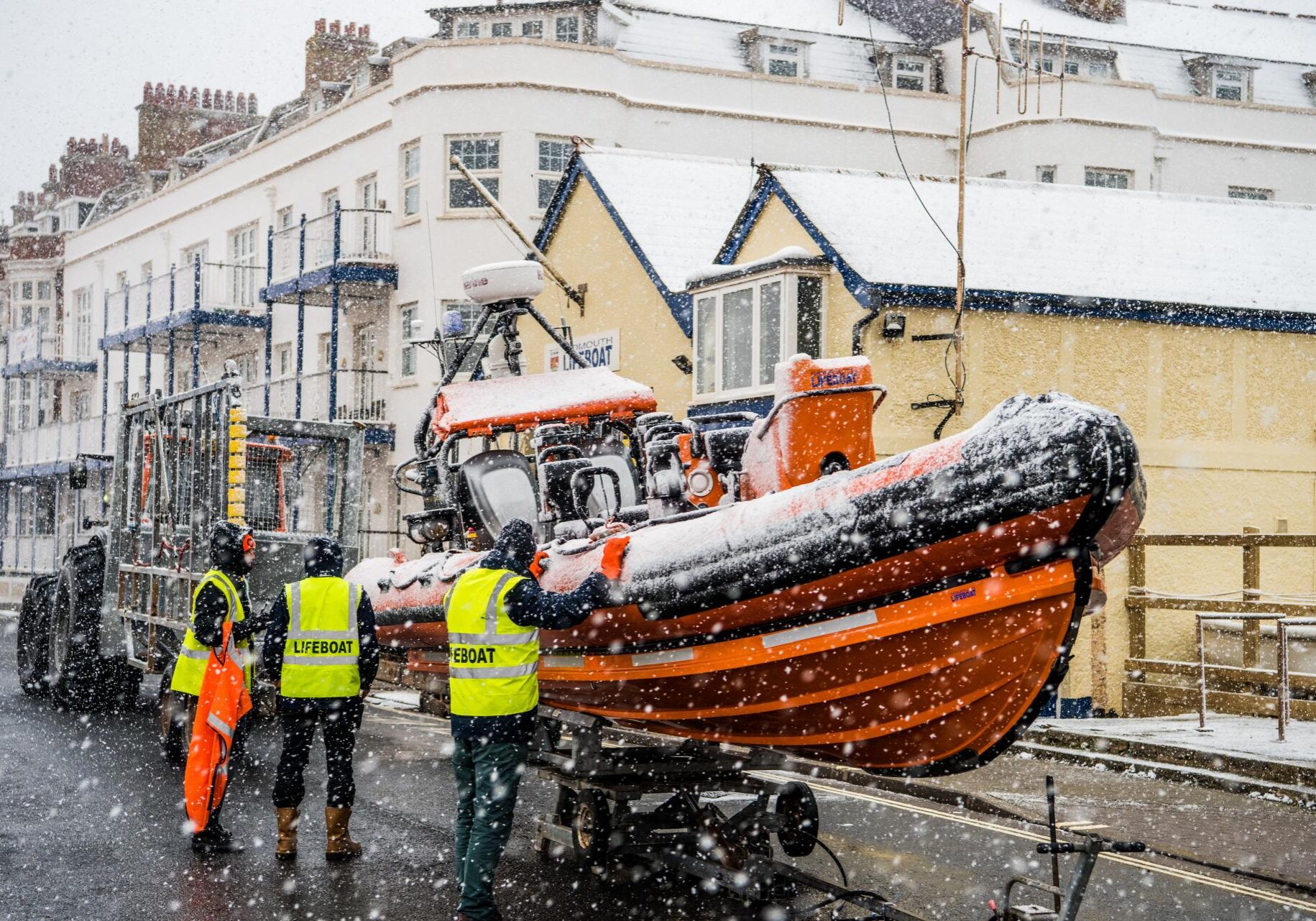
Turn Table
Helps the crew physically rotate the Arctic 24 180 degrees, so it sits the correct way in the trailer, ready for launch again.
Peter & Barbara Truesdale
The Sidmouth Lifeboat is an Arctic 24 self-righting Rigid Inflatable Inshore lifeboat.
Powered by 2x150hp outboard motors. It carries a 4 man crew at a top speed of 45 Knots.
At 7.66 metres long, 2.54 metres beam and 2050 kgs displacement, it is larger heavier and faster than its predecessor the Atlantic 21.
When operating in difficult conditions the strength and design of the deep “V” hull combined with the forward ballast tank provide a more capable lifeboat giving a safer more comfortable ride for the crew and survivors at higher speeds in heavy weather.
The boat is named after its benefactors - the late Surgeon Captain Peter Jeffrey Truesdale, a former Honorary Physician to the Queen, and his sister, the late Barbara Truesdale.
Length Overall: 7.66m
Beam Overall: 2.54m
Draught: 0.80m
Displacement: 2050 kgs
Crew: (4 man crew)
Coxswain: In Command of Lifeboat & Helmsman
Navigator: Operates Radio, GPS & Radar Systems
Crew x 2: Survivor & Casualty Care
Survivors: Up to 8
2 x 150 hp Outboard Motor fitted with PIRS (Post immersion restart System)
Speed – Full Load: 45 knots
Range at Full Power: 140 nm / 3.5 hours
Under deck: Ballast tank – fill and empty during operation
Fuel tanks 2 x 150 litre
Sponsons: Inflatable sponsons 11 compartments – Emergency Inflation Bladder System.
“A frame” and mast Self righting system: Righting Bag, 2 x C02 gas cylinder. Navigation lights, 2 x floodlights, Radar antenna, VHF antenna, DSC antenna, AIS Antenna’s.
Navionics: GPS Chart plotter system with Helmsman repeater, Radar, Sonar depth sounder, electronic compass, AIS system and magnetic steering compass
Communications: VHF radio with DSC, 4 station intercom system, PA, Mobile telephone
Manufacturer: BAE Systems
Standards and Approvals: The vessel has been designed and built, to comply with the Maritime and Coastguard Agency (MCA) Code of Practice for all Open Rescue Boats Operational category B, day and night use. Structure to comply as a minimum with ISO6185.
Compliant with MCA Regulation 5, Merchant Shipping (Small Work Boats and Pilot Boats) Regulations 1998.
"Speedy Sid" - Sea Rider
Affectionately known as "Speedy Sid", Sidmouth Lifeboat's Sea Rider can be dispatched without the need of a tractor to support our Arctic 24 Sidmouth or "fill in" when its unavailable. Speedy Sid also doubles the crew’s training capacity.
Make: MilproAvon Sea Rider
Length: 4.2M
Beam/width: 1.9M
Draught/depth: 0.6M
Displacement/load: 361KG
Fuel capacity: (Run time at full speed- time & distance) 25L
Engines: 40Hp 2 stroke with PIRS
Maximum speed: 26Knots
Launch type: Small trolley
Under Deck: Filling Hull
Communication equipment: Handheld VHF radios
Navigation equipment: Garmin GPS
"Mary Taylor" - Launch Vehicle
The tractor was named after Mary Taylor who left a sum of £92,000 as a legacy to the Lifeboat with the intention of it being used to purchase a new Launch vehicle.
Sidmouth Lifeboat’s launch system consists of the marinised tractor unit, “Mary Taylor”, and the trailer unit. “Mary” is a Valtra tractor, prepared by JP Wilsons of Dumfries in 2014/15.
We would expect the tractor to last for around 800 launch & recovery operations, i.e. around 8 years, and a replacement is already in build with our regular engineer, Paul Bowler & Sons, for delivery by 2023.
While calm weather launch depth is level with the top of the front tyres, in heavy weather waves over 10’ high will totally submerge the tractor and trailer.
Engine & Transmission
The tractor has been stripped of all ancillary components, down to the bare engine & transmission casings and has had the following modifications:
Sealed clutch housing with greased seals.
Oil splashed clutch assembly with Cera-Metallic plate to avoid seizure.
Grease nipples fitted to all axle universal joints.
The chassis and running gear has a hi-spec coat of paint over the original substantial factory finish, and then heavily coated with wax oil.
The starter motor is sealed to prevent water ingress.
The engine air intake is routed into the top of the cab interior via twin ball float valve boxes which will shut off the air supply to the engine should the tractor break down and need to be left submerged for any length of time. The exhaust can also shut off.
Wheels & Tyres
“Mary” is fitted with welded and galvanised wheels; 30” wide tyres on the rear and 25” wide tyres on the front. These have been water ballasted to:
Remove buoyancy to help the tractor retain good ground contact, even when fully submerged.
Increase the weight of the tractor by 4 tonnes to around 11 tonnes, thereby compacting the shingle to increase its ‘shear strength’ to obtain maximum traction.
Trailer
The galvanised trailer is hydraulically height adjustable, allowing the Lifeboat to be lifted from the water by approximately 1 metre when being launched and recovered in rough weather.
In calm weather the boat recovers into the trailer backwards. In unsettled conditions a bow first “net” recovery is performed.
The blade
The blade is the upright section at the front of the trailer. This has 3 functions:
It acts as a dozer blade, allowing the steep shingle beach to be levelled and graded for launching and recovery.
The blade’s hollow steel section creates a tank that is filled with water. Hoses run from the tank to the Lifeboat engines and allows the engines to warm up before entry into the sea.
The blade provides protection for the tractor and driver from waves, flying shingle and the boat which may overtop the net during very heavy weather recovery.
"Winchy" - Winch Tractor
Make: Ford 7610
Length: 4M
Width: 2.25M
Weight: 2.7Ton
Engine: 4.4L 4 cylinder diesel
Maximum speed:
Communication equipment: VHF
What it tows:
Sea Rider
Mary & boat
What do we use it for?: Recovery of all craft up the main beach. We use the winch tractor to assist us in pulling Speedy Sid up the slipway after recovering the boat onto the beach. The winch tractor also assists the other main launch vehicle - The Mary Taylor - if it needs any support getting up the sometimes steep and loose pebbles on the main beach.
Turn Table
What do we use it for?: To prepare the Lifeboat for service following a net recovery*, it is necessary to remove it from the trailer and turn it around. This is done by using a small turntable. With the trailer in the raised position, the Lifeboat is reversed over the turn table and once in position, the Lifeboat is lowered onto the turn table. The tractor then pulls forward and the Lifeboat is rotated by hand. The tractor then reverses back and the trailer is raised, lifting the Lifeboat off of the turn table, secure in the trailer.
(*A net recovery is when the lifeboat drives into the trailer and is ‘caught’ by the net, rather than reversing into the trailer. This type of recovery is used in rough weather or when it is necessary to get the lifeboat back to shore quickly, for example, if a casualty is on board.)
